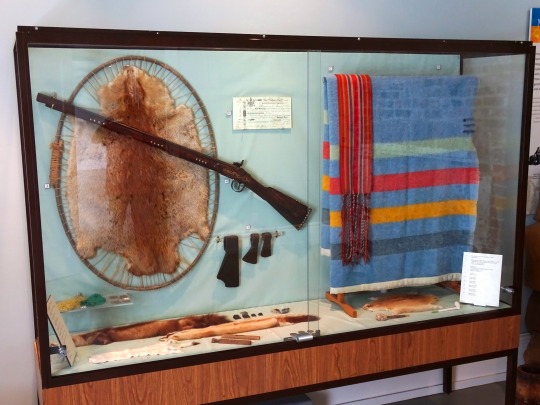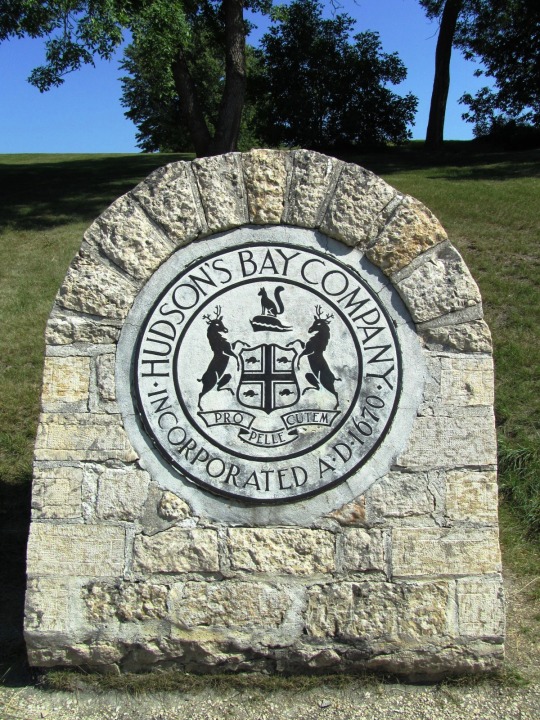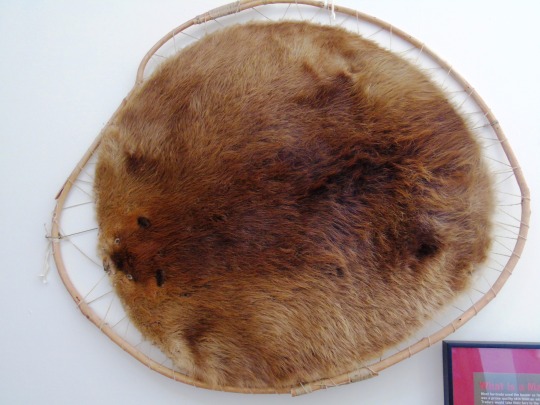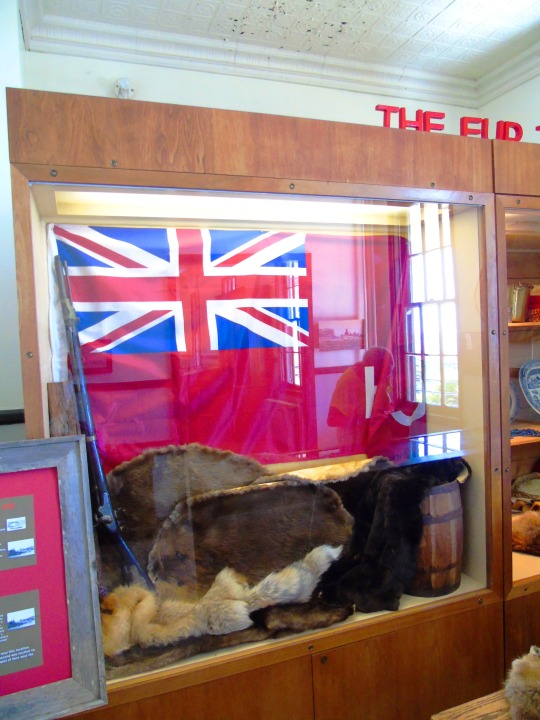#1670 HBC
Photo










King Charles II of England granted a permanent charter to the Hudson’s Bay Company to open up the fur trade in North America on May 2, 1670
#Fort York National Historic Site of Canada#Toronto#Ontario#Canada#travel#Fort Columbia Historical State Park#Washington#USA#vacation#2018#2017#summer 2012#Lower Fort Garry National Historic Site#charter#HBC#Hudson’s Bay Company#fur trade#2 May 1670#anniversary#landmark#cityscape#beaver felt#Canadian history#tourist attraction#architecture#museum
3 notes
·
View notes
Text
After the closure of their flagship shopping location in Winnipeg in 2020, what’s going on with Canada’s beloved retail department store, the former fur trade monopoly leader, once a central force in the British Empire’s control of North America, the Hudson’s Bay Company? The empire lives on, continuing to control land through Canadian and US real estate companies. Liquidating real estate can keep the money and keep the land in the same hands.
Regarding the decline of the oldest European company in North America, and “new” manifestations of imperialist conceptions of land: I wanted to summarize the reporting work of Don Gillmor, in an article for The Walrus published in January 2023. (Credit to Gillmor for piecing together these threads of thought and framing the story, here.)
So the “oldest company in North America” is the Hudson’s Bay Company. After chartering in the 1670s, HBC “owned” vast stretches of land and was central to British and later Canadian control of “the West,” and then enjoyed decades of celebration in the twentieth century as a retail department store chain. HBC’s flagship store in Winnipeg was finally closed in November 2020. At the time, commercial real estate firms “valued the building at $0.” As Gillmor puts it: “Millions of Canadians grew up with the Hudson’s Bay Company as a place to buy towels and clothes, but land has always been at the heart of HBC. Canada’s oldest company began as a land deal (at least from the European perspective) during an outbreak of the bubonic plague and may end as a real estate deal in another plague.”
---
In 2022, as part of what many observers and some Indigenous critics considered a superficial public relations campaign, HBC “gifted” the 500,000 square-foot downtown Winnipeg building to the Southern Chiefs’ Organization, an “alliance of southern First Nations communities in Manitoba.” Critics haven’t all been impressed.
Here, Gillmor cites some local commentary: “[A]n episode of Media Indigena, a podcast broadcast from Winnipeg by journalist Rick Harp, [...] offered another perspective. A guest, Kenneth Williams, an assistant professor with the University of Alberta’s department of drama, suggested that, as reparations, it wasn’t enough. HBC exploited Indigenous people for centuries [...]. And the Winnipeg store was ground zero for this trade, with the largest fur storage facility in western Canada, a vault that could hold 12,000 furs. Williams suggested ‘the inspired act of reclamation’ was merely HBC getting rid of a toxic asset.”
Current HBC governor and chairman, Richard Baker, seems to be purposely liquidating HBC’s assets, to cash out, so to speak. In a 2020 interview, Baker said: “We’re not a department store chain. We’re a holding company that owns many billions of dollars of real estate.”
---
Since inception, it been all about land.
So the “company’s roots can be traced back to 1665″ when Pierre-Espirit Radisson traveled to London to ask for the financial backing of King Charles II. This was the same year that up to one-fifth of London’s population had died during an outbreak of bubonic plague. By 1670, King Charles II “granted the charter that started the Hudson’s Bay Company, but the ownership of the land was largely an abstraction. He had no idea of its size and viewed it as a commodity. [...] The imbalance of power meant that the colonizer’s mercantile philosophies” including apparent human detachment from and lordship over land “became the foundation” for British imperial power in Canada.
---
In 1867, “the Dominion of Canada was formed, but much of the west was still controlled by HBC.” In that same year, “the Americans bought Alaska from the Russians,” and so, to compete with the United States, both the British government and infamous Canadian prime minister Macdonald pressured HBC to sell much of western North America to the Canadian government at a discount price, giving Canada so-called “ownership” of a massive stretch of land "twice the size of Alaska.”
---
And now, the chairman of HBC is cashing out. And the Empire’s found new ways to mask its activities while still keeping land in the same hands.
According to Gillmor: “In 2012, he took the company public and acquired the upscale department store Saks [...]. In March 2020, [...] Baker won his bid to take the company private once more [...]. In Canada, the last of the big homegrown department stores (Simpson’s, Eaton’s, Sears, and Zellers) were all gone. In the US, Macy’s was closing stores; Neiman Marcus, Barneys, JCPenney had all filed for bankruptcy [...]. Mark Cohen, director of retail studies at Columbia University and a former CEO of Sears Canada, saw it as a thinly veiled strategy to strip the assets of HBC so only the real estate remained [...]. ‘It’s a financial play,’ he said, ‘which gives him the ability to manipulate the real estate assets of Hudson’s Bay, both in Canada and the US.’ [...] ‘Baker will liquidate the Bay,’ Cohen predicted. ‘He will liquidate.’ If he does -- its Bay Days sales and Stanfield underwear finally gone -- all that will be left will be the land. Currently, it is controlled by deeds, leaseholds, and leases that are shared by Baker, venture capitalists, equity partners [...].”
Meaning that the future of the HBC stores and other properties across North America remains similar to the initial colonization project. Again from Gillmor: “[T]his version of the land echoes that of the seventeenth century: its ownership [...] complex [...] and profiting someone in another country.”
Land profited kings. Land now profits CEOs and venture capitalists and property management companies.
---
All quotes above were excerpted from Gillmor’s article: Don Gillmor. “Why Hudson’s Bay Company’s Future Is in Question.” The Walrus. 4 January 2023. [Bold emphasis added by me.]
---
Related.
In an article from October 2020, on the eve of the Winnipeg store’s closure, Manitoba-based reporter Niigaan Sinclair offered some commentary. Following quote from: Niigaan Sinclair. “Right place, right time: Downtown Bay building a monument to colonization’s brutality, but it could be transformed into a place of Indigenous positvity, reconciliation.” Winnipeg Free Press. 5 October 2020.
Three-and-a-half centuries after Hudson’s Bay Co. received its first charter -- giving Prince Rupert and his “Company of Adventurer’s of England” an exclusive trading monopoly over the entire Hudson Bay drainage basin -- it’s biggest symbol of colonization is coming to an end. [...] [T]he company plans to close its six-storey flagship store at Portage Avenue and Memorial Boulevard, literally Canada’s gateway to the West. So this is how colonization ends. The people who profit the most take all they can from the land and people within it, and then quietly leave when there’s nothing left to take. Soon, all that will be left is an empty [...] pile of plaster and metal that will cost millions to repair or remove for those who actually live here. Really, though, this is how colonization continues. HBC is not a retail empire -- never really was -- but a massive real estate company. Just as King Charles II gave Prince Rupert lands that were not his to give, HBC holds deeds to billions of dollars of global property [...] and will march on. [...] HBC’s legacy of exploitation, violence and theft is permanent, though. HBC began with profits from the slave trade and cheap goods from the British colonies. It was instrumental in manufacturing goods for the Commonwealth [...]. Alongside were billions built off Indigenous lands and resources.
61 notes
·
View notes
Video
youtube
Hudson's Bay Company : A Legacy Begins 1670 #hbc
In 1670, the Hudson's Bay Company was founded, marking a pivotal moment in Canadian history. Starting as a fur trading venture, it soon became a key player in exploration, trade, and settlement across North America. This historic company's legacy continues to shape Canada's identity today. 🎥 Visit our YouTube channel to see more! 🎥 https://www.youtube.com/channel/UC79oPmcGmZt6YyttMWWA-HA #HudsonsBayCompany #HBC #CanadianHistory #FurTrade #CanadianHeritage #CanadaHistory #HistoricCanada #NorthAmericanHistory #1670 #Exploration #IndigenousHistory #CanadianCulture #ColonialHistory #TradeRoutes #CanadianIdentity #HistoricEvents #HistoryOfCanada #HudsonBay #RoyalCharter #LegacyOfHBC #canada #pulsevibesmedia
0 notes
Text
Celebrating Canadian Excellence: A Guide to All Canadian Brands
Canada is renowned for its diverse culture, stunning landscapes, and exceptional quality of life. What often goes unnoticed is its thriving industry of homegrown brands that span various sectors, from fashion and food to technology and home goods.Local Canadian Brands These Canadian brands not only contribute to the nation's economy but also showcase the creativity, innovation, and dedication of Canadian entrepreneurs. This article delves into some of the most iconic and emerging Canadian brands that have made a mark both locally and globally.
Fashion and Apparel
Roots
Founded in 1973, Roots has become synonymous with Canadian fashion. Known for its high-quality leather goods, comfortable sweats, and iconic beaver logo, Roots captures the spirit of the Canadian wilderness and urban lifestyle.
Canada Goose
Established in 1957, Canada Goose is a global leader in luxury outerwear. Famous for its exceptionally warm parkas and jackets, the brand combines functionality with fashion, making it a staple for winter wear around the world.
Lululemon
Starting as a yoga-inspired athletic apparel brand in 1998, Lululemon has grown into a global phenomenon. With a focus on technical athletic wear, the brand has expanded its product line to include gear for various sports and everyday activities.
Food and Beverage
Tim Hortons
No list of Canadian brands is complete without Tim Hortons. Since its founding in 1964, the coffee and donut chain has become a national institution.Essential Oils Vancouver Known for its "Double-Double" coffee and Timbits, Tim Hortons is a beloved part of Canadian daily life.
Maple Leaf Foods
As one of Canada's largest food processing companies, Maple Leaf Foods is a staple in Canadian households. The company is committed to providing high-quality, sustainable meat products, reflecting the country’s rich agricultural heritage.
Molson Coors
One of North America's oldest breweries, Molson Coors, was established in 1786. The brand is known for its wide range of beers, including the iconic Molson Canadian, and has played a significant role in Canada's brewing history.
Technology and Innovation
Shopify
Founded in 2006, Shopify has revolutionized the e-commerce industry. The platform enables businesses of all sizes to create and manage online stores with ease. Shopify's success story is a testament to Canada's burgeoning tech industry.
Blackberry
Once a dominant player in the smartphone market, Blackberry now focuses on providing security software and services to enterprises and governments. Its legacy in mobile innovation continues to influence the tech landscape.
Bombardier
A leader in the aerospace and transportation sectors, Bombardier is renowned for its innovations in aircraft and rail technology. The company's commitment to excellence and sustainability has cemented its reputation on a global scale.
Home Goods and Lifestyle
Hudson's Bay Company (HBC)
Founded in 1670, HBC is one of the oldest companies in North America. Its flagship retail stores, known as The Bay, offer a wide range of products, from fashion and home goods to beauty and accessories, making it a cornerstone of Canadian retail.
Simons
A family-owned fashion retailer since 1840, Simons offers a curated selection of designer, own-label, and international brands. With a focus on style, quality, and customer experience, Simons continues to be a favorite among Canadians.
Umbra
Founded in 1979, Umbra specializes in modern, functional home decor. Known for its innovative designs and practical products, Umbra has become a global leader in home accessories.
0 notes
Photo

Inspired by Harry Styles. by nikka-phillips featuring mens silver rings
#polyvore#1670 HBC#Maison Kitsuné#Louis Vuitton#Cutler and Gross#Prada#M. Cohen#Alexander McQueen#Gioielli Corsini#Paige Denim#men's fashion#menswear#clothing#harry styles style#harry styles fashion#harry styles
10 notes
·
View notes
Photo

Jackson Kenner by hopeintheheart featuring mens black waterproof boots
1 note
·
View note
Photo

🌿 by foxfieldians featuring vintage mens shoes ❤ liked on Polyvore
Mens slim fit tapered jeans, $56 / Vintage mens shoes / Emporio Armani mens leather watch / 1670 HBC mens t shirt / Mens sunglasses / Gents mens leather hat / Green hooded sweatshirt
0 notes
Photo

Afraid to be by teylorkxng featuring mens short sleeve shirts
#polyvore#MANGO#1670 HBC#Vans#Coach#Tumi#J.W. Anderson#ORMONDE JAYNE#men's fashion#menswear#clothing
0 notes
Photo




HBC Stripes Camp Set
In honour of Canada Day on July 1st, I'm happy to share this mini camp set reimagined in the iconic HBC Stripes! These stripes are the motif of the Hudson Bay Company, which was founded in 1670!
Happy Canada Day! 🇨🇦
Download (Free, no ads)
347 notes
·
View notes
Photo

On this day, May 2 1670 the oldest corporation in North America was formed, as England’s King Charles II gave a royal charter to the Hudson's Bay Company to break up the fur monopoly of France. After incorporation by English royal charter in 1670, the company functioned as the de facto government in parts of North America for nearly 200 years until the HBC sold the land it owned (the entire Hudson Bay drainage basin, known as Rupert's Land) to Canada in 1869 as part of the Deed of Surrender. During its peak, the company controlled the fur trade throughout much of the English- and later British-controlled North America.
266 notes
·
View notes
Text
















King Charles II of England granted a permanent charter to the Hudson’s Bay Company to open up the fur trade in North America on May 2, 1670.
#Hudson Bay Building#Quesnel#British Columbia#summer 2023#Fort York National Historic Site of Canada#Toronto#Ontario#Canada#travel#Fort Columbia Historical State Park#Washington#USA#vacation#2018#2017#summer 2012#Lower Fort Garry National Historic Site#charter#HBC#Hudson’s Bay Company#fur trade#2 May 1670#anniversary#landmark#cityscape#beaver felt#Canadian history#tourist attraction#architecture#museum
0 notes
Text
the forbidden barkskins pilot scripts
So I’ve just read these May 21, 2018, versions of the Barkskins pilot and episode 2, and… assuming they ARE legitimate old scripts... where to begin.
The major beats are mostly the same, and so is much of the dialogue. Some of the dialogue is the same but is spoken by other people. (Reading Yvon’s words come out of Bouchard’s mouth was a bit of a shock.) And some stuff is very very different. It was also still set circa 1690 at this point, like the novel, while we’ve since established that the show is more 1670s.
The supernatural elements are more pronounced in this version, or maybe they just feel that way because there’s a script pointing them out? For example, the necklace Yvon retrieves from the dead Iroquois (dead Huron, in this script) is said to have a “strange black obsidian orb” in the center, which feels significant, especially considering pilot-Hamish later decides to wear himself. Right after the stone “GLOWS.” Okay fashion icon, rock that clearly cursed necklace, I’m sure nothing ill will come of that.
Oh yeah but definitely the most egregiously more pronounced supernatural element has gotta be the uh

CRICKET-HEADED CRAB DEMON
This is from the scene just before they find Renardette, which doesn’t actually happen till the beginning of ep 2. Hamish and Yvon would still just see the wolf, but through Clape’s eyes we’d see… that.
Speaking of Hamish and Yvon...
Yvon was supposed to be in his 30s... and Hamish in his 40s. SCREAM? Okay, just completely flip that dynamic, I guess! Granted, our Hamish is definitely still an old man at heart.
Overall, Hamish’s characterization is pretty much like we know him. Yvon… I’m deeply frustrated by how shallowly Yvon was characterized at this point. He’s got barely ANY lines, he does not have his wit or his levity or his love of poetry… You know the stereotype of the stoic, serious Native warrior? That’s the impression I’m getting. “Large,” with “hard black eyes,” says the script. Besides being stereotypical, think how much less contrast there would be in Hamish and Yvon’s dynamic if they were both so stiff and somber.
Hamish mentions that he helped “clear” Potawatomi and Huron from around “the lakes.” I did not love this. Like… I get that in every version, Hamish is very much an agent of colonialism and imperialism, but he starts out with still such a sense of ethics and honor, and finds it so difficult to believe how ruthless the HBC is willing to be, that I find it hard to imagine him having already participated in the direct, firsthand violence of clearing Native people from their land. And I just prefer not to think of him being directly involved in that.
On a lighter note! Hamish and Cross were still brothers-in-law, but Randall was not married to Hamish’s sister. Oh no. He was married to the sister… of Hamish’s wife.
MARRIED HAMISH… the mind boggles.
I mean, fuck, I’ll volunteer to be his wife, though, where do I apply.
Regarding other characters…
There’s no sign of Renardette till ep 2, because ep 1 cuts off before she’s found, and the pilot’s opening scene is quite different. Instead of Ren fleeing, we see a guy sinking a body in the bog — presumably Cross sinking that body he later wants passed off as his own?
The presence of the filles du roi is MUCH reduced. There is no Mother Sabrine. No mention of Melissande till ep 2, and she’s not actually present; it sounds like she’s still back in France, as Trepagny is negotiating to marry her via letters. We get one brief glimpse of Delphine in the pilot, which, although brief, does reinforce my suspicion that the writing has something planned between her and Duquet:

(We do still see that moment in the actual show, of course, but I feel like this script emphasizes that he’s into her specifically, not just the filles in general, and the mouthing her name… yeah.)
The thing about Melissande is interesting... She’s stated to be the daughter of an aristocrat, but even though we do (in the show) see her claim that she’s upper class, I personally never believed it. I always got the impression that she’s pretending to be of much higher status than she actually is, and that’s still my take on it.
Mari was still Mi’kmaq in this pilot, as she was in the novel. This accounts for a little difference in the scene where she and Duquet discover the marks on the ram; instead of calling them “a sign of Strendu,” she calls them a sign of Chenoo — both of which are, broadly speaking, man-eating giants, but the former is from Wendat culture and the latter Wabanaki. She also tells Duquet that the beast in the woods (which he thinks of as the loup-garou) is Chenoo.
Obviously I’m not going to get into every detail here, this is too long already, but… yeah! Interesting to see how things have changed — very much for the better, imo. I’m so relieved that subsequent development brought a lot more complexity to Yvon, expanded the presence of the female characters, and generally brought more nuance into the writing and characterization, including that of minor/background characters, which I didn’t even get into here.
Kinda wish we could’ve seen that cricket demon, though. I know that on screen, not seeing the monster is often more effective than actually being shown it, but come on… cricket demon… crab demon… cricket-headed crab demon!!
#Much To Think About......#barkskins#elwood reid#hamish goames#yvon#renardette#mari#delphine langois#melissande#charles duqet#barkskins meta#op
38 notes
·
View notes
Text
I’m sure this is old news to people, but I have just learned about the existence of the Hudson Bay Company blankets:

These blankets played a large role in the Hudson Bay Company’s business in Canada: https://www.mentalfloss.com/article/81913/history-hudsons-bay-blanket-canada (I’m sure someone like @calamity-bean could do a way better deep-dive on this history of this)
But honestly ALL I CAN THINK ABOUT now is that scene where Hamish puts on his little black goth cloak to stalk around Wobik and WHAT IF HE WORE A HUDSON BAY COMPANY BLANKET INSTEAD
I can’t stop laughing at how the atmosphere of this scene would be COMPLETELY different if he only had a Hudson Bay Company blanket available to him :D (he’d be smol prep boy instead of smol goth)
Also while looking at Wikipedia, it says the HBC was started in 1670, which I think is when the tv show Barkskins takes place (as opposed to 1690 in the book), sooo is Hamish like an original, founding member of the HBC???
3 notes
·
View notes
Text
mlleizzy replied to your post “Okay, just WUT was going on in Hamish’s head when he let them massacre...”
Yes! This is the ultimate question that I have; I see the loyalty, but why though? Hamish generally seems like a practical dude, so there has to be a deeply personal reason to be so loyal to a group that you’re willing to assist in the ruthless killing of innocent people. And you’re totally right about it being a tumultuous time. Hamish would have theoretically been born around the time of the English Civil Wars. The head canon I have for him and his sister is growing from that starting point...
mlleizzy replied to your post “Okay, just WUT was going on in Hamish’s head when he let them massacre...”
Re Time period of the show. I’ve seen a lot of conflicting things on this, but finally got to the bottom of it. The BOOK is placed in the 1690s, but @per Elwood Reid, the show is in the 1670s. My guess on taking it back slightly is because by the 1690s, England and France were at war. That didn’t matter in the book cause the HBC wasn’t a part of the plot, but for the show, well, Hamish and Yvon would have been treated far worse in 1690 Wobik.
Oh that is a good shout! I was wondering what time period the show was supposed to be and wavey hand assumed it was late 1690s, but didn’t know about England and France being in war. Him having been born in the midst of the English Civil War does colour some new headcanons for me as well
1 note
·
View note
Photo

Untitled #2 by refiik16 featuring converse mens shoes ❤ liked on Polyvore
ESPRIT mens ripped skinny jeans, 73 BAM / Nautica men s clothing, 200 BAM / Converse mens shoes, 66 BAM / 1670 HBC mens pullover, 9.54 BAM
0 notes
Photo

Boy by charles-gunther featuring christian louboutin mens shoes
#polyvore#prAna#1670 HBC#Lords of Harlech#AMIRI#Off-White#Burberry#Paltò#Christian Louboutin#Yves Saint Laurent#adidas#EyeBuyDirect.com#Chanel#H&M#Crosley#LE3NO#men's fashion#menswear#clothing
0 notes